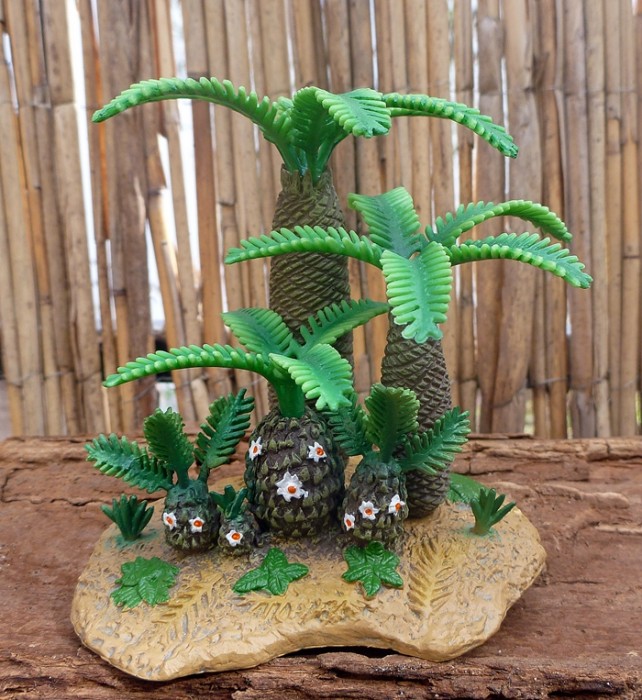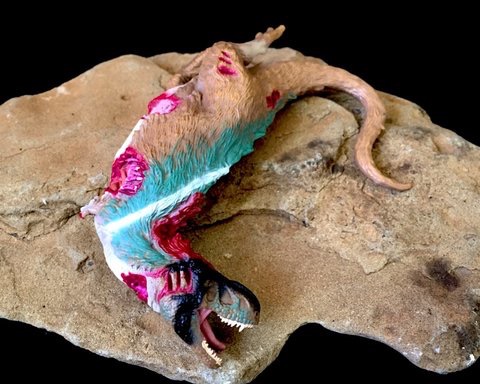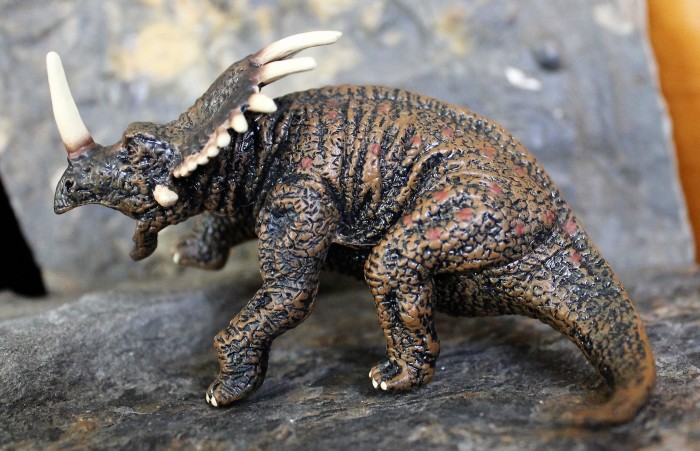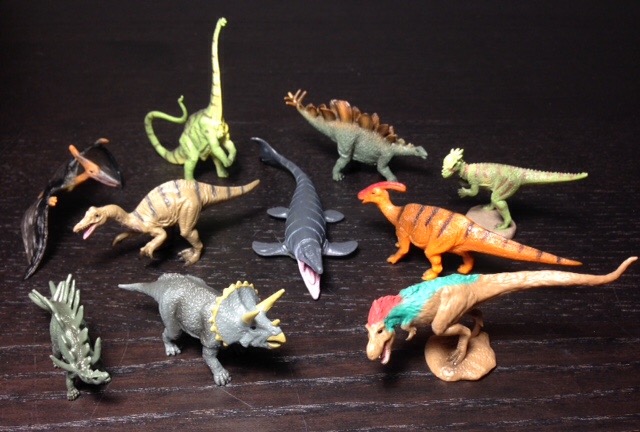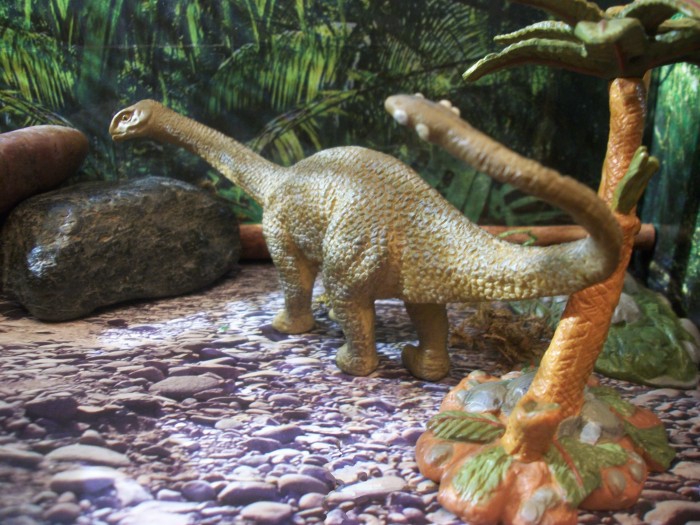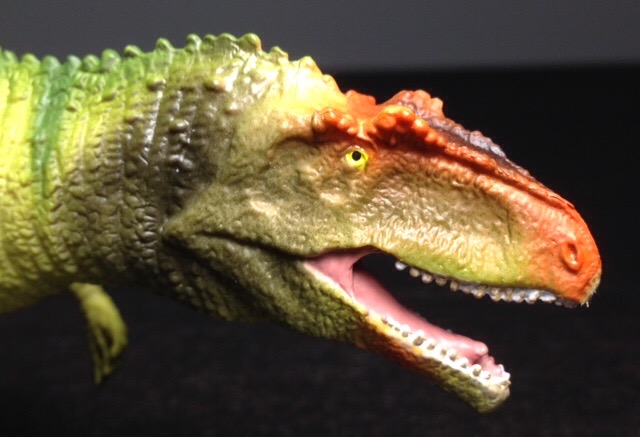Review and photos by Lanthanotus, edited by Suspsy
Greens, stems, and leaves, but no teeth, no blood, no gore . . . no wonder plants seldom provide more than background for movies or our dinosaur collections. Day of the Triffids (1962) is the classic plant horror film par excellence, where seemingly harmless plants attack and kill humans and charge to take over world domination within days (for those of you that can’t stand classic B-movies or modern semi-quality TV adaptations of them, Splinter may be a more thrilling choice, though the antagonist is !SPOILER ALERT!
Brand: CollectA
Review: Williamsonia (CollectA)
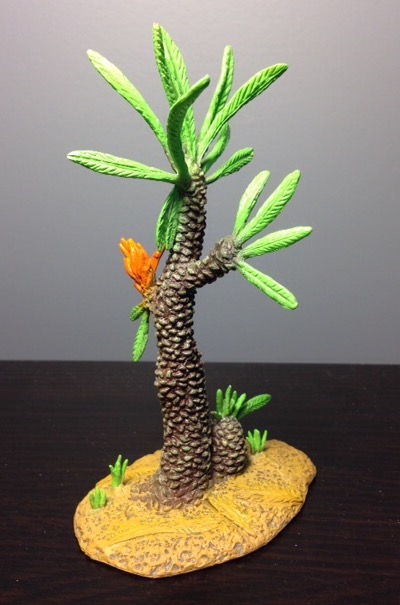
5 (15 votes)
Thought I’d take a stab at reviewing a prehistoric plant for the first time. Let’s take a look at Williamsonia, a member of the order of Bennettitales, or cycadeoids. Bennettitales were an order of seed plants that first arose during the Triassic and then flourished all the way until the end of the Cretaceous.
Review: Tyrannosaurus rex (Corpse by CollectA)
Review: Tylosaurus (CollectA)

1.8 (21 votes)
Tylosaurus was one of the biggest and baddest mosasaurs, second only to Mosasaurus itself. Indeed, the largest mounted mosasaur skeleton in the world is the 13 metre long “Bruce,” located at the Canadian Fossil Discovery Centre in Manitoba.
CollectA’s 2009 Tylosaurus figure measures a mere 18.5 cm long, but that’s only due to the pose it’s sculpted in.
Review: Miragaia (CollectA)
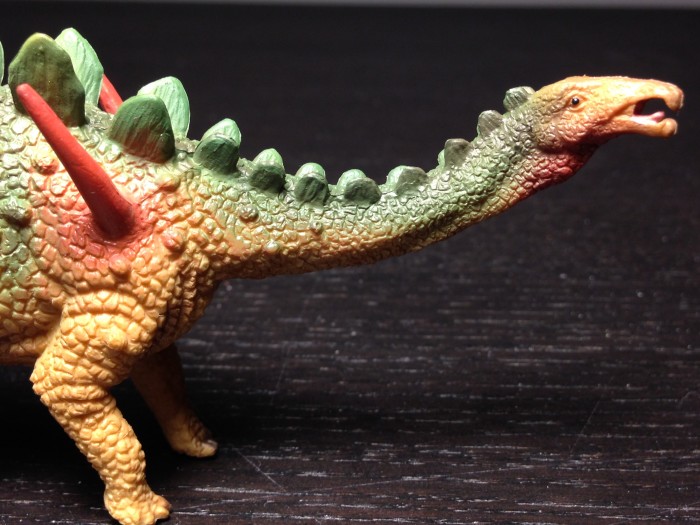
3.3 (20 votes)
Discovered in Portugal in 1999, Miragaia is unique for having the longest neck of any known stegosaur, with at least seventeen vertebrae. Its name refers both to the parish where it was discovered and the Latin for “beautiful earth goddess.”
The 2012 CollectA Miragaia appears to have been caught in a moment of surprise.
Review: Styracosaurus (CollectA)
Review: Spinosaurus (Deluxe Walker by CollectA)
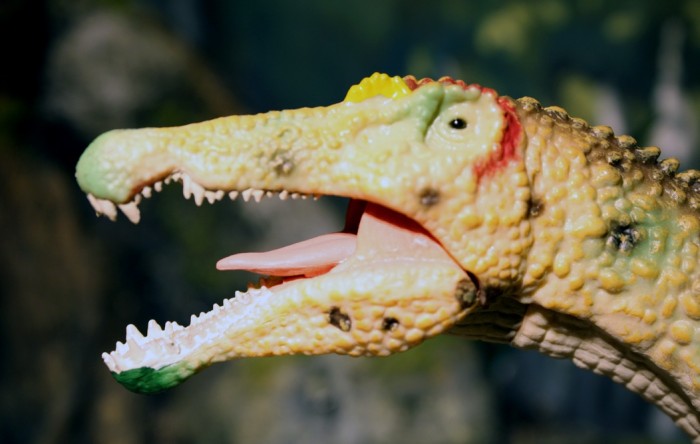
4.2 (18 votes)
Review and photographs by Dinomike, edited by Suspsy
CollectA has demonstrated that they’re ready to play in the niche market scene by pandering to their small, but potentially loyal dinosaur community. Faster than a Gallimimus running on a Cretaceous treadmill, they’ve sped past their competitors and produced not only one, but three amazing interpretations of Spinosaurus aegypticus based on Paul Sereno and Nizar Ibrahim’s scientific paper published in 2014.
CollectA has demonstrated that they’re ready to play in the niche market scene by pandering to their small, but potentially loyal dinosaur community. Faster than a Gallimimus running on a Cretaceous treadmill, they’ve sped past their competitors and produced not only one, but three amazing interpretations of Spinosaurus aegypticus based on Paul Sereno and Nizar Ibrahim’s scientific paper published in 2014.
Review: Prehistoric Tube A (CollectA)
Review: Shunosaurus (Procon/CollectA)
Review: Mapusaurus (CollectA)
Review: Ankylosaurus (Deluxe by CollectA)
Review: Temnodontosaurus (Birthing)(CollectA)

4.9 (15 votes)
Her long, hard months of effort, of endless hunting and feeding, have come to an end. With one final push, the mother expels the baby from her womb and into a world full of danger. But if he can manage to survive and catch his own food, the little swimmer will eventually grow into the top predator of his domain.

